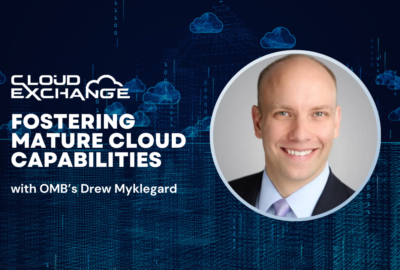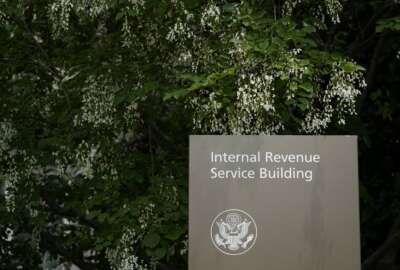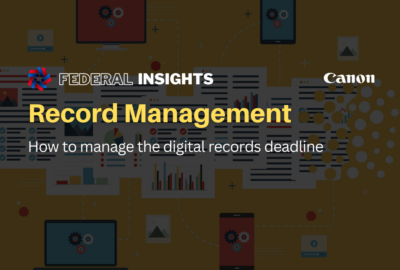Insight by ServiceNow
Cloud Exchange 2024: ServiceNow’s Jonathan Alboum on using cloud to drive better experiences, build trust
ServiceNow federal CTO says expanding use of AI and advanced CX will help with gaining public’s trust in government’s digital services.
In the five years since the White House released the Cloud Smart Strategy, federal agencies have made strides in leveraging modern technologies to support their missions and deliver digital services to the public.
Jonathan Alboum served as chief information officer at the Agriculture Department in the years prior to when the Office of Management and Budget released Cloud Smart in June 2019. The strategy followed a flurry of early cloud adoption sparked by the Obama administration’s 2011 Cloud First approach.
Alboum, now the federal chief technology officer at ServiceNow, said Cloud Smart helped usher in an era of agencies moving purposefully into the cloud.
“Everybody was able to take a collective breath and say, ‘Well, now that we’re learning this technology and these concepts a little bit better, let’s think about the right places to apply them,’ ” Alboum said during Federal News Network’s Cloud Exchange 2024. “It’s not a one-size-fits-all environment at any agency or any organization. So the opportunity to think, sometimes collectively, and then sometimes about an individual program or individual set of requirements, and pick the right technologies, is what we wanted to do.”
The strategy advanced an interdisciplinary approach to the cloud, centered on three pillars: security, procurement and workforce.
In some cases, Alboum said agencies had to explore new funding mechanisms and contracting approaches. In many cases, agency IT teams had to rebalance their skill sets away from managing data centers to instead managing cloud services and applications.
An evolution in how tech supports federal missions
“It really was an evolution, and it was a period of great learning,” Alboum said. “And you can see the results today are really tremendous. It’s really changed the way government operates. And we’re able to do so much more for the people that we serve because of technologies like cloud.”
For many CIOs, Alboum said the move away from the data center was a clear benefit.
“If I didn’t have to manage a data center, and I didn’t need the staff that was managing a data center, I’m able to redeploy those staff members to different activities,” he said. “Maybe I can provide a better customer experience. Maybe I can be more focused on cybersecurity. Suddenly, I have more bandwidth, no pun intended, to be focused on the mission.”
But moving data from on-premise data centers to the cloud also represented a real risk for federal agencies, ranging from escalating use costs to cybersecurity threats.
Addressing those risks required implementing new policies and processes. And another factor that has emerged within the last five years, Alboum said, has been the automation of workflows that allow for cloud adoption.
“Now, we’re really reducing the risk of rogue action, and we’re also ensuring that we’re doing things in a best practices kind of way,” he said. “That is really important because cloud isn’t free.”
Clouds next era in government: AI and CX
In many ways, agencies have now entered a new phase of cloud adoption with the introduction of artificial intelligence and machine learning capabilities, Alboum said. Under President Joe Biden’s AI executive order, agencies are exploring ways to adopt AI to enable their mission and deliver better public services.
Alboum said he believes AI and machine learning will make it easier and faster to interact with the government.
“Generative AI can do so many steps that the human used to have to do before,” he said. “We can accelerate an outcome and those things are going to provide tremendous benefits to federal employees and the people those employees serve.”
Improving customer experience is a key initiative for the Biden administration.
“Better customer experience will create, in my opinion, more trust in agencies’ ability to deliver services and provide people who really need them with either the benefits that they deserve or the information that they need,” Alboum said.
With the Cloud Smart efforts well underway and an increasing focus on AI, CX and cybersecurity, Alboum said agencies have an opportunity to continue creating that trust with the public.
“The central theme of trust coming out of a modernized technology environment, one that’s digitally transformed, one that is intelligent, that provides end-to-send services that can be trusted, that provides real benefit to people,” Alboum said. “That’s what I see the future being, and we’re already on that path. I think now’s the time to take all the parts and pieces that we have, and really put them together in a way that can accelerate this process.”
Discover more articles and videos now on Federal News Network’s Cloud Exchange 2024 event page.
Copyright © 2024 Federal News Network. All rights reserved. This website is not intended for users located within the European Economic Area.
Follow @jdoubledayWFED






